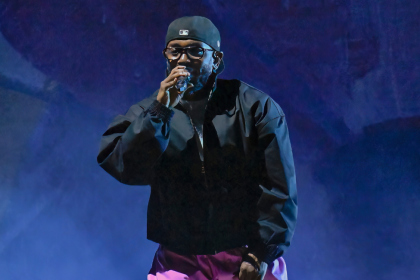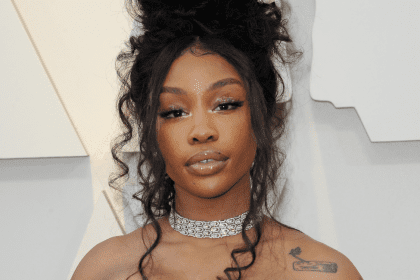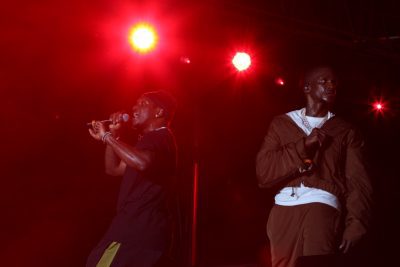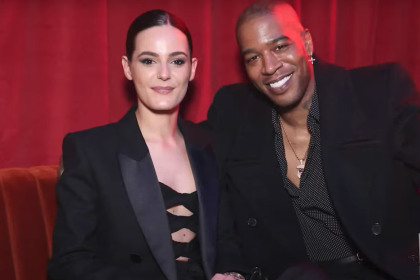Kendrick Lamar experienced contrasting fortunes during the 2025 American Music Awards ceremony on May 27, securing victory in only one category while facing defeats in five others despite his significant industry achievements throughout the year. The Compton rapper’s mixed results at the awards ceremony highlighted the unpredictable nature of music industry recognition even for established artists with substantial commercial success.
The award show outcomes occurred alongside Lamar’s unprecedented achievements in live performance revenue, demonstrating how artistic success can manifest through different metrics beyond traditional award recognition. His simultaneous struggles and triumphs illustrate the complexity of measuring artistic impact in contemporary music industry contexts.
Single victory emerges from multiple nomination disappointments
Lamar’s sole American Music Award victory came in the Favorite Hip Hop Song category for his track Not Like Us, providing recognition for his continued relevance in rap music despite broader category losses. This win acknowledged his ability to create culturally significant hip hop content that resonates with both industry professionals and general audiences.
The rapper faced defeats in five additional categories including the prestigious Artist of the Year award, which went to Billie Eilish instead. Eilish’s victories over Lamar in both Album of the Year and Song of the Year categories demonstrated the cross-genre competition that characterizes major music awards today.
Hip hop category losses proved particularly significant, with Eminem claiming both Favorite Hip Hop Artist and Favorite Hip Hop Album awards. These defeats suggested that even within his primary genre, Lamar faced strong competition from established peers who maintained their own substantial fan bases and critical recognition.
Collaboration and visual content categories present additional challenges
Lamar’s nomination alongside SZA for Collaboration of the Year ultimately resulted in defeat to Bruno Mars and Lady Gaga for their hit Die With A Smile, demonstrating how cross-genre collaborations can outperform within-genre partnerships. This loss highlighted the commercial appeal of unexpected artist pairings that capture broader audience attention.
The same Bruno Mars and Lady Gaga collaboration also defeated Not Like Us in the Favorite Music Video category, suggesting that visual presentation and production values influenced voting outcomes alongside musical content. These visual media defeats indicated areas where Lamar’s content faced challenges despite strong musical composition.
The pattern of losses across multiple categories suggested systematic voting preferences that favored other artists’ work over Lamar’s contributions, despite his continued cultural influence and commercial success throughout the award period.
Concert revenue achievements establish new industry benchmarks
Lamar’s Grand National Tour generated unprecedented single-concert revenue figures that overshadowed his awards ceremony disappointments, with his Seattle performance grossing $14.8 million from nearly 61,000 attendees. This achievement marked the first time any rapper exceeded the $14 million threshold for individual concert revenue.
The Seattle milestone followed his previous record-breaking performance at AT&T Stadium in Dallas, where he generated $11.822 million in single-night revenue. These consecutive record-breaking performances demonstrated sustained audience demand that translated directly into measurable financial success.
His tour opening night in Minneapolis contributed over $9.1 million from more than 47,000 fans, establishing what was then the highest grossing rap concert in history before his subsequent performances exceeded even those impressive figures.
Historical significance emerges through performance revenue records
The Seattle concert achievement established Lamar as the highest grossing Black performer in history for single live performance revenue, surpassing The Weeknd’s previous record of $9.8 million from his 2022 SoFi Stadium concert in Los Angeles. This milestone represented significant progress in Black artist economic achievement within the live performance industry.
Breaking this particular barrier demonstrated how Lamar’s success extended beyond artistic recognition to encompass meaningful economic advancement that could influence industry structures and opportunities for future Black performers. The record established new possibilities for live performance revenue generation.
The progression from The Weeknd’s previous record to Lamar’s new benchmark illustrated the growing economic potential of live hip hop and R&B performances in contemporary entertainment markets, suggesting continued growth opportunities for artists who can generate substantial audience demand.
Chart performance demonstrates sustained commercial relevance
Not Like Us achieved historic chart longevity by becoming the first rap song to spend an entire year on the Billboard Hot 100, demonstrating sustained commercial appeal that extended far beyond initial release momentum. This achievement indicated deep cultural penetration that maintained listener interest across extended time periods.
The year-long chart presence suggested that Lamar’s music achieved rare crossover appeal that transcended typical rap audience boundaries to reach mainstream listeners who continued consuming the content months after initial exposure. This longevity indicated successful artistic and commercial strategy execution.
Such extended chart performance typically requires multiple factors including radio play, streaming consistency, and cultural relevance that maintain audience interest despite constant new music competition. Lamar’s achievement in this area demonstrated mastery of contemporary music consumption patterns.
Industry recognition complexity reflects changing music landscape
The contrast between Lamar’s awards ceremony struggles and his commercial achievements highlighted how different industry success metrics sometimes produce contradictory results. Award voting may reflect industry insider preferences that differ from general audience behaviors demonstrated through ticket purchases and streaming activity.
Contemporary music industry success increasingly depends on multiple revenue streams and audience engagement metrics beyond traditional award recognition, making Lamar’s touring success potentially more significant than ceremonial recognition for long-term career sustainability and influence.
The awards ceremony results suggested that even established artists with substantial cultural influence cannot assume automatic recognition from industry voting bodies, requiring continued innovation and audience connection to maintain competitive positioning.
Touring success establishes sustainable career foundation
Lamar’s record-breaking concert revenues provided financial foundation for continued artistic independence and creative control that awards recognition alone cannot guarantee. These economic achievements enabled future projects and touring investments that support long-term career development.
The massive audience turnout for his performances demonstrated genuine fan dedication that translates into sustainable career support regardless of industry award outcomes. This foundation provides stability for continued artistic experimentation and cultural influence beyond traditional recognition mechanisms.
Live performance success also creates opportunities for expanded creative projects including multimedia presentations, collaborative ventures, and cultural initiatives that leverage audience connection for broader artistic and social impact beyond individual song or album recognition.
Mixed results reflect contemporary music industry dynamics
Lamar’s simultaneous award struggles and commercial triumphs exemplified how contemporary artists must navigate multiple success metrics that may not align consistently across different evaluation criteria. Industry recognition, commercial success, and cultural influence represent distinct achievement categories with different measurement standards.
The disconnect between awards ceremony results and measurable commercial success suggested that traditional industry recognition mechanisms may not fully capture contemporary artist impact, particularly for artists whose influence extends beyond conventional music industry boundaries into broader cultural conversations.
These mixed results ultimately demonstrated Lamar’s resilience and adaptability in pursuing artistic success through multiple pathways while maintaining cultural relevance regardless of specific recognition outcomes in traditional industry contexts.
Lamar’s experience illustrated how established artists continue facing competitive challenges while building upon previous achievements to establish new benchmarks for artistic and commercial success in evolving music industry environments.


















